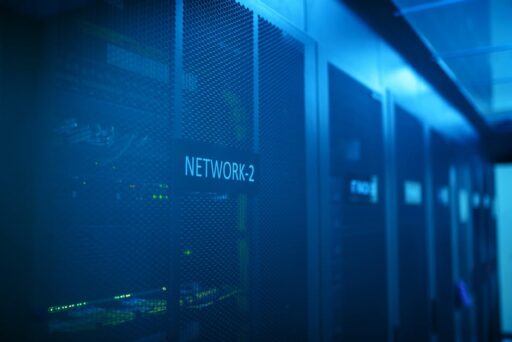ChatGPT Product Updates 2024–2025: A Complete Timeline and Analysis
Since its public debut, ChatGPT has evolved from a conversational prototype into a broad suite of AI products and features used by consumers, developers, enterprises, and governments. Between 2024 and 2025 the platform saw rapid iteration: new reasoning and multimodal models, expanded safety and parental controls, commerce and browsing experiments, pricing updates for global markets, and enterprise-grade capabilities for research and agents. This guide organizes those developments into a clear timeline, summarizes their practical impact, and highlights what to watch next.
What are ChatGPT’s major updates in 2024–2025?
Short answer: OpenAI released multiple model upgrades (including new reasoning and multimodal models), launched commerce and browsing features, expanded parental and safety controls, introduced country-specific deployments and pricing tiers, and rolled out agent and research tools that automate complex workflows.
At-a-glance highlights
- New model releases and variants that improved reasoning, coding, and multimodal capabilities.
- Safety and mental-health handling improvements, plus stronger parental controls for minors.
- Commerce and browsing features that let users shop and get answers directly inside ChatGPT.
- Enterprise and government offerings for secure deployments and compliance.
- Agent and Responses API updates enabling automated, task-oriented assistants.
Timeline: Key ChatGPT releases and product shifts
Below is a structured timeline of the most significant ChatGPT developments in 2024–2025, organized by theme and date ranges to help readers quickly locate relevant changes.
Model and capability upgrades
OpenAI continued releasing new models and tuned variants focused on reasoning, codemaking, and multimodal inputs. These updates aimed to balance performance with cost-efficiency and broaden available deployment options for developers and paying users.
- Reasoning and coding models: New reasoning-focused models were introduced to improve complex problem solving and code refactoring. Some models were positioned as general-purpose reasoning engines while smaller variants prioritized affordability for non-production tasks.
- Multimodal and image features: Image generation and editing tools were integrated into ChatGPT and companion video/image products, expanding creative workflows for subscribers and API customers.
- Voice and speech: Text-to-speech and speech-to-text models were improved to deliver more natural audio and better transcription accuracy, enhancing voice interactions and accessibility.
Safety, moderation, and mental-health handling
Responding to concerns about sensitive conversations and harmful outputs, the platform deployed several policy and technical updates:
- Revised handling of mental-health-related prompts, informed by expert consultation, to detect and escalate high-risk scenarios and provide safer response patterns.
- Expanded parental controls to let guardians restrict features (voice, image generation) and set quiet hours for younger users.
- Updated model behavior guidelines and monitoring systems to limit unsafe biological, chemical, and illicit guidance.
Commerce, browsing, and proactivity
ChatGPT began to experiment with more proactive and transactional experiences:
- Conversational shopping features were introduced so users could browse products, read reviews, and complete purchases without leaving chat flows.
- An AI-powered browsing experience rolled out on desktop platforms, letting the assistant pull live web results into conversations rather than relying solely on cached training data.
- New personalization features—like morning briefings and scheduled tasks—aimed to make the assistant more proactive and asynchronous.
Enterprise, government, and region-specific offerings
To meet security and compliance needs, the company rolled out tailored products:
- Secure enterprise tiers with tools for data privacy, internal knowledge search across workplace apps, and connectors to cloud services.
- Government-focused deployments designed for agencies requiring managed controls and compliance features.
- Country-targeted plans and infrastructure initiatives to support local data sovereignty and payment options across emerging markets.
How did pricing and access change?
Plans and pricing were adjusted to expand reach and reflect feature differentiation:
- Introduction and expansion of low-cost regional plans aimed at increasing adoption in international markets.
- Tiered subscriptions (free, mid-tier, Pro, enterprise) that gate advanced models, image/video generation, larger memory, and agent features.
- Preview and beta windows for developers and paying customers to test research-focused releases before broad availability.
How have agents and automation evolved?
One of the biggest shifts was towards agentic automation: packaged assistants that can perform multi-step workflows. These agents combine browsing, file access, code execution, and scheduling to complete complex tasks end-to-end. The Responses API and agent SDKs enabled enterprises to configure specialized assistants for research, sales, engineering, or high-income knowledge work.
Typical agent capabilities
- Autonomous calendar management and meeting preparation
- Automated research that aggregates multiple sources and synthesizes findings
- Code analysis and repository Q&A for engineering teams
What are the biggest risks and controversies?
Rapid feature deployment raised predictable concerns that the industry must address:
- Accuracy and hallucinations: LLMs may produce authoritative but inaccurate outputs; users and organizations must verify critical claims.
- Mental-health and safety: AI companions are not substitutes for clinical care; robust detection and escalation remain priorities.
- Copyright and content provenance: Image styles and training data usage prompted debate about rights and attribution.
- Energy and infrastructure: Scaling large models drives demand for compute and energy, prompting efficiency and infrastructure investments.
How should organizations prepare for ongoing change?
Companies and teams adopting ChatGPT or similar assistants should consider the following practical steps:
- Define clear use cases and guardrails: Identify tasks where automation adds value and set boundaries for sensitive use.
- Validate outputs: Integrate human review for high-stakes decisions and maintain audit trails for model-driven actions.
- Manage data flows and privacy: Use enterprise connectors and region-specific infrastructure to meet compliance needs.
- Train staff and update policies: Educate employees on limitations, responsible usage, and escalation paths.
How does this relate to OpenAI’s broader strategy?
Model consolidation, diversified pricing, and a push toward agents reflect an effort to transition from a single chatbot to a full platform of AI-driven products. This strategy includes prioritizing developer tools, enterprise integrations, and localized infrastructure to support global expansion.
Further reading and internal resources
For background on the company’s organizational and strategic shifts, see our explainer on the company’s financing and governance changes: OpenAI Recapitalization Explained: New For-Profit Model.
For more on model launches and the developer ecosystem showcased at major events, read: OpenAI Unveils Advanced AI Models at Dev Day: GPT-5 Pro and Sora 2.
To understand platform expansion on desktop and Mac platforms, see our coverage of a strategic acquisition enabling broader platform reach: OpenAI Acquires Sky: Revolutionizing AI on Mac Platforms.
FAQ (Featured-snippet optimized)
Is ChatGPT safe for minors?
Newer parental controls allow guardians to limit features, mute sensitive content, and set usage windows. While technical safeguards have improved, supervised use and human oversight remain essential for minors.
Can ChatGPT replace specialized professionals?
No. ChatGPT accelerates tasks and augments workflows, but domain experts are necessary for validation, ethical judgment, and final decision-making.
Key takeaways
- ChatGPT evolved into a multiproduct platform with model, commerce, and agent-driven features between 2024 and 2025.
- Safety, privacy, and regional deployment became central to product decisions as adoption scaled globally.
- Enterprises should adopt a staged approach: pilot, validate, scale with governance.
What to watch next
Expect continued refinement of multimodal reasoning, broader availability of agent templates, improved transparency around model behavior, and increased focus on cost-effective deployment for enterprises and developers. Ongoing regulatory pressure and legal clarity around data usage and copyright will also shape how features are rolled out.
Conclusion and call to action
ChatGPT’s rapid product evolution shows how quickly generative AI is maturing from novelty to infrastructure. Whether you’re an individual user, developer, or enterprise leader, staying informed and building responsible guardrails will determine whether you capture the benefits while managing the risks.
Stay up to date with our ongoing chronology and analysis of AI product releases — subscribe to Artificial Intel News for weekly breakdowns, model comparisons, and actionable adoption guides.





